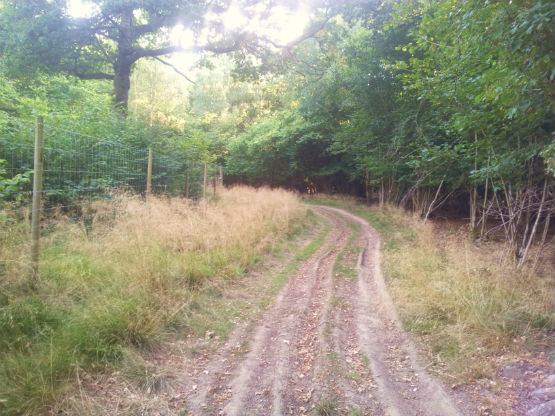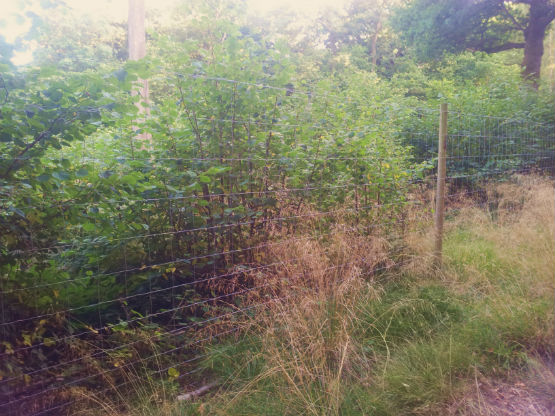Peter Jones looks at the effect of Deer on on our Countryside.

(Above: Different sides of the fence, on which side of the fence do your opinions lie?)
Deer Damage is a phrase much bandied about these days, be it by the local forester or farmer or more recently in the national press. How many of us however, are actually aware of the degree of damage that an unmanaged and sizeable population of deer can inflict?
The fact is that as a result of our high deer population much of the UK’s natural landscape has been shaped. Deer without natural predation and increased forestation have reached numbers which are now widely un conducive to a healthy balanced countryside.
From aesthetic point of view the countryside and woodlands are to my mind simply less beautiful in what is essentially this unnatural state. Be it the lack of ground cover amongst the woodlands of Ashdown forest in Sussex at one end of the country or else the lack of woodland cover in the Highlands of Scotland at the other. Both areas have experienced wide scale and prolonged habitation by deer and as a result have sustained substantial damage to the natural state.
Fairly recently I have taken on a block of woodland near Oxford. The ground is around 300 acres of well established deciduous woodland. My remit was simply to drastically reduce the resident deer population in order to encourage a return of the woodland to somewhere near its natural state.
What has been of particular interest in this woodland is that there are several large areas that have been fenced in order to exclude Deer, the majority of which are Fallow with occasional Roe.
I appreciate that my observations are not truly sceintific, however anyone who is in doubt about the sheer level of destruction that can be inflicted by an unmanaged herd of Fallow deer, or any other deer for that matter, would be well advised to witness themselves the polarity of the fenced and unfenced areas.
Below are two pictures, Fig 1 represents the fenced area and fig 2 the unfenced. The contrast is clear.

Above Fig 1: The fenced area on the left hand side of the track, excluding deer.

Above Fig 2 The unfenced area on the right of the track, open to browsing by deer.
The fenced areas contain dense lush vegetation, whilst the unfenced areas have a distinct browse line with the under storey laid bare to dead wood and earth. This I am afraid is an all too common a situation. Indeed I suspect that many people will be so accustomed to this type of woodland that they may even consider it to be the natural state of things. Let’s be clear however, it is not.
With the obvious level of mismanagement over this patch of forestry over what must have been many years, restoring a more natural state is a huge challenge that will require a consistent prolonged management plan encompassing good forestry and Deer management focused on reducing the breeding population of deer. What is perhaps equally challenging however will be meeting the owner’s expectation around the time scales in which this can be achieved!
In the mean time I must express some selfish gratitude, it is not uncommon on an evening stalk through these woodlands to regularly see 20 or 30 deer, and with a growing number of requests to go deer stalking, getting to grips with the culling of this population of Fallow should make for a productive seasons Fallow Stalking!



















